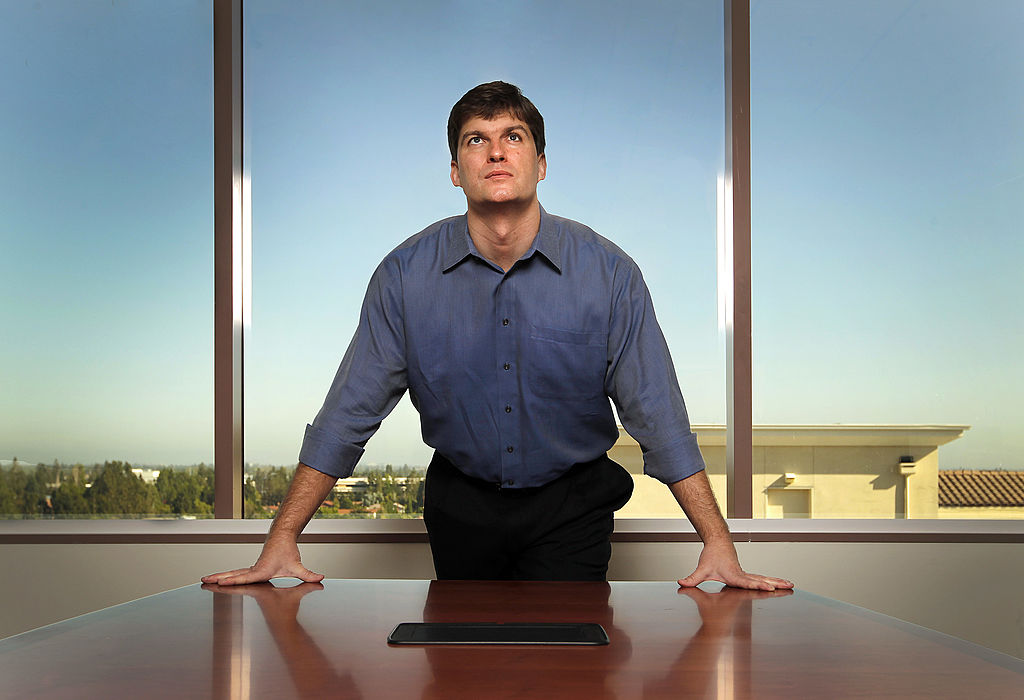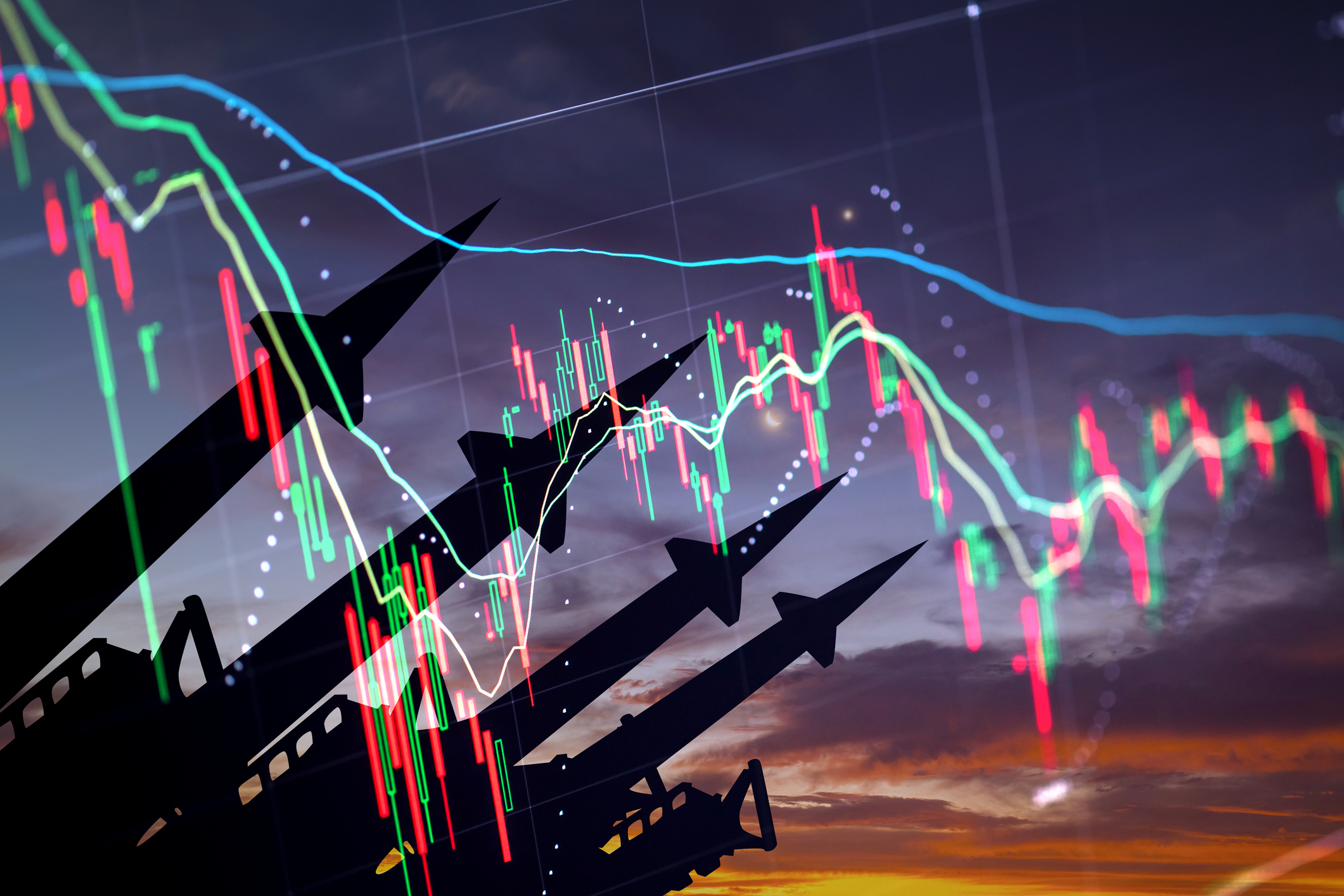Why you should consider founder-led firms for your portfolio
Founder-led firms tend to outperform. Dr Mike Tubbs explains why and surveys the world’s equity markets to gauge which ones currently look the most appealing


Companies managed by their founders are often better investments than those managed by newcomers for three reasons. First, the founder usually has a substantial stake, so their personal wealth rises with the firm’s success. Second, the founder is an entrepreneur and likely to be good at spotting business opportunities. Third, as far as science and technology-based firms are concerned, the founder will hold the key patents and will defend them strongly, thus enabling the company to expand without larger competitors grabbing market share. The following examples illustrate these points.
Golden era of founder-led firms
The first example is Edwin Land of Polaroid. Before the Second World War, Land invented a low-cost method of making optical polarisers (these let certain light waves through but block others) from plastic film. They found wide application in sunglasses and were used in military equipment during the war. After the war, Land invented the Polaroid instant camera, which produced refined black-and-white pictures in 15 seconds.
This was followed by instant colour photography in the 1960s, the compact SX-70 camera in 1972 and instant-colour movie film in 1977. In 1976 Kodak introduced an instant-colour camera based on Polaroid’s SX-70 principles, but these were protected by patents. Polaroid sued for patent infringement and won a $925 million settlement. The court ordered Kodak to withdraw all its instant cameras and films from the market.
MoneyWeek
Subscribe to MoneyWeek today and get your first six magazine issues absolutely FREE

Sign up to Money Morning
Don't miss the latest investment and personal finances news, market analysis, plus money-saving tips with our free twice-daily newsletter
Don't miss the latest investment and personal finances news, market analysis, plus money-saving tips with our free twice-daily newsletter
Land was a great innovator who protected his inventions with patents (his 500th patent was filed in 1977) and these enabled him to prevent Kodak, the world’s top photographic company, from marketing a copy of his key product. Polaroid’s revenue rose from under $100 million in the mid-1950s to $500 million in 1970 and around $1.5 billion by 1980. Polaroid’s shares were one of America’s top growth stocks in the 1960s and, with Xerox, one of the best of that era’s “nifty fifty” US growth companies.
The second example of a founder-led firm is James Dyson and his range of household appliances. His range of dual-cyclone vacuum cleaners are his best-known products. Dyson’s company was founded in 1991 and the early DC01 model became the UK’s biggest-selling upright vacuum cleaner in just 18 months. Dyson went on to take 47% of the UK market by 2001. He achieved record global revenues of £7.1 billion in 2023 and invested £470 million in research and development (R&D) to develop new products, including some based on robotics and AI.
In the years before 1991, Dyson explored various licensing deals. Neither Hoover nor Electrolux were interested in his dual-cyclone cleaners because they feared the loss of valuable income from sales of replacement vacuum cleaner bags. Dyson sent confidential information and prototypes to a US company, Amway, as part of a proposed licensing deal. Amway decided not to take a licence but some months later introduced a cleaner of its own, based on Dyson’s confidential information. Dyson sued for patent infringement and the case was settled by Amway agreeing to take a licence. Dyson is now the top brand by sales in the US. It is so profitable that it has funded its own expansion and never needed to float on the stock exchange, so investors are unable to buy shares. These two examples show how a talented inventor with a patented invention and investment in R&D can start a company, produce a whole series of new products and succeed against market leaders such as Kodak in photography, or Hoover and Electrolux in vacuum cleaners.
Our third example is Renishaw of the UK, founded by David McMurtry. In 1972, while working at Rolls-Royce on the design of Concorde’s Olympus engines, he invented the touch trigger probe used to measure very small distances accurately. A year later, McMurtry founded Renishaw with a colleague, John Deer. The first overseas sales subsidiary was established in the US in 1981 and Renishaw was fully listed on the London Stock Exchange in 1984, with turnover reaching £100 million in 2000. Renishaw has sued rivals for patent infringement whenever it has found competing products using its patented technology. Renishaw shares rose from 77.6p in mid-1988 to more than 4,000p recently.
Our fourth example is Apple, co-founded by Steve Jobs and Steve Wozniak in 1977, which went public in 1980. Wozniak left in 1983 and Jobs hired John Sculley of PepsiCo as president, but Jobs and Sculley did not get on; Sculley and the board ousted Jobs in 1985. He left and founded both Pixar Animation and NeXT Computer. Apple continued to do well until 1990 but fared badly in the years up to 1996.
The share price slid from a peak of $0.64 in early 1991 to a low of $0.12 in 1997 and many observers thought Apple was doomed. In 1997 the board invited Jobs back in as CEO and the company revived and prospered with a series of new products (the iBook, iPod, iPhone, iPad and iWatch) until Jobs’ untimely death in 2011 at the age of 56. The share price reached $14 in late 2011, up more than 100 times from 1997’s low. This example shows the danger of ousting an innovative founder in favour of an apparently experienced businessman from a lower-tech industry.
Founder-led firms leading the field
A 2016 Harvard Business Review article showed that founder-led companies in America’s benchmark stock market index, the S&P 500, outperformed the others. From 1990 to 2014, total shareholder return was more than three times as large for the founder-led companies as for all others in the S&P 500. Large US founder-led companies include Amazon (started by Jeff Bezos), Apple (Steve Jobs), Berkshire Hathaway (Warren Buffett), Dell (Michael Dell), Facebook (Mark Zuckerberg), Google (Sergey Brin and Larry Page), Intel (Gordon Moore of Moore’s Law fame), Microsoft (Bill Gates), Netflix (Marc Randolph), Nvidia (Jensen Huang) and Oracle (Larry Ellison).
Several of these are no longer managed by the founder. However, in all cases, the founder grew the company to a substantial size. Furthermore, S&P 500 companies where the founder is still CEO generate 31% more patents, have patents that are more valuable and are more likely to make bold investments that adapt and renew the business model. This is probably because founder-CEOs have the moral authority to make hard choices, know the detail of the business, have the right business instincts and are prepared to take a long-term perspective on investments that build the group. Renishaw, for example, has consistently invested about twice as much in R&D relative to sales as the average for its sector, and ensures that R&D is directed towards innovations that can be patented.
Smaller founder-led companies prove to be successful
The 11 large, listed US founder-led companies mentioned above have all been excellent investments for those who recognised their potential at an early stage. However, strong annual growth is much more difficult for large companies to produce, so it is worth looking at smaller founder-led firms with the potential to grow turnover and profits by 10 times or more. There are, for example, several UK founder-led companies of modest size on Aim, London’s junior stockmarket.
Several of these have already proven to be very good investments. One example is Judges Scientific, the scientific-instrument company founded by CEO David Cicurel who still controls just over 20% of the shares, so his interests are closely aligned with those of his shareholders. Judges’ current market value is £687 million and the shares have risen almost tenfold since 2014. Judges acquires small scientific-instrument companies and grows them by providing extra R&D, links to existing companies with relevant technology and access to its worldwide network of sales offices.
The UK excels in the field of scientific instruments, so Judges takes advantage of this. Its reputation as a good acquirer that develops its purchases makes it an attractive partner for private companies where the owner wishes to sell.
A second example is Elixirr International, the digital and artificial intelligence (AI) consultancy founded by Stephen Newton in 2009. He is the CEO and holds 28.7% of the shares, so his interests are closely aligned with those of his shareholders. The group’s move into data analytics and AI consulting is enabling it to grow at double-digit rates at a time when traditional management consultancies are finding the market challenging. Elixirr was my MoneyWeek tip for 2024 at 472p, and it has been trading at 580p in recent weeks. Its market capitalisation is £270 million and 2023 sales reached £86 million, nearly triple 2020’s figure.
Then there is Alpha Group International (previously known as Alpha FX) founded by Morgan Tillbrook in 2009. He is currently the CEO and holds 13.7% of the shares. Alpha operates in financial areas such as FX risk management and alternative banking. Alpha’s market cap is £1 billion and 2023 revenue was £110 million (more than double 2020’s £46 million). The company was delisted from Aim on 2 May this year and moved to the main market.
The fourth and smallest example is EnSilica, the custom microchip designer for the automotive, industrial, healthcare and communications sectors, founded in 2001 by Ian Lankshear, the current CEO who holds 19.6% of the shares. EnSilica’s market value is £45 million and revenue for the year to 31 May 2023 was £20.5 million (more than double 2021’s £8.6 million).
In the biotechnology sector, meanwhile, many small founder-led companies are still in the research stage where they are developing their technology, and their first products are some way from profitability. An exception is BioNTech, which developed the Covid vaccine based on its mRNA technology. The vaccine was marketed by Pfizer and enjoyed massive sales in 2021 and 2022. Although sales have greatly decreased since then, the income from those early sales has given BioNTech ample cash to develop its mRNA-based personalised oncology treatments and vaccines for infectious diseases.
BioNTech was founded in 2008 by Christoph Huber, Ugur Sahin and Özlem Türeci. Ugur Sahin is the current CEO. In 2023 revenue reached €3.8 billion, down from the Covid vaccine peak of €18 billion in 2021. The stock’s market value is $20.5 billion. Investment platform and research group Morningstar sees the potential for the pipeline to produce sales of €8 billion by 2033 (€3 billion of mRNA vaccines, €2 billion mRNA oncology therapies and €3 billion of antibody-based oncology treatments).
Moderna is the other biotech that produced a Covid vaccine and its board is chaired by Noubar Afeyan, one of the four co-founders of the company. He owns 11.74 million shares worth more than $1.4 billion. In a similar way to BioNTech, Moderna’s revenue dropped from a Covid high of $18.9 billion in 2022 to $6.75 billion in 2023.
South American examples are NU (a digital banking platform) and Mercado Libre, founded by CEO Marcos Galperin in 1999 in his father’s company’s garage. His company is known as the Amazon of South America, selling a wide range of goods from electronics to supermarket basics with a 24-hour delivery promise. It also boasts a financial technology (fintech) division. Its headquarters is in Montevideo, but it is incorporated in Delaware. Its turnover in 2023 was $14.5 billion, up from $7.1 billion in 2021.
British companies to watch out for
Several large US companies such as Apple, Intel and Microsoft are no longer founder-led. However, Alphabet, Amazon and Nvidia still are. They boast the potential for further profitable growth. These three have all released strong results for the first quarter of 2024. They are also global market leaders in their sub-sectors: Alphabet in online advertising; Amazon in both cloud computing, through its Amazon Web Services (AWS) division – the biggest global provider – and online retail; and Nvidia in complex semiconductors for AI and cloud computing.
Alphabet is also the third-largest cloud computing group, behind Microsoft in second place. Both Alphabet and Amazon are spending heavily on AI but can afford to do so since both have amassed free cash flow of more than $50 billion in the past 12 months. Nvidia is the market leader in chips for AI, and can’t keep up with demand. Canadian market research group Precedence Research predicts the market will grow from $28 billion this year to $104 billion in 2029 and $227 billion in 2032.
Alphabet’s first-quarter results exceeded analysts’ expectations for revenue (up 15%), net income and earnings per share. It announced a $0.20 per share dividend together with an additional $70 billion share buyback. Amazon’s results showed sales up by 13%, with net income and cash flow also up markedly. AWS’s sales were up by 17% and the division contributed $9.4 billion to a total operating income of $15.3 billion. Nvidia announced revenue up 19% on the previous quarter and predicted revenue of $11 billion for the second three months of 2024. Net income was up by 44% over the previous quarter to $2.04 billion. These results all attest to profitable growth.
We now turn to recent results from the five British companies: Renishaw, Judges, Elixirr, Alpha Group and EnSilica. Renishaw said of its third-quarter results to 31 March 2024 that it had made solid progress in mixed markets, and saw early signs of recovery in the semiconductor equipment market. Revenue was £172.4 million for the quarter, up from £166 million in the previous quarter and with net cash of £207 million. Renishaw’s founders, who hold over 50% of the shares, are in their eighties and, in early March 2021 they announced plans to sell the company. The shares rapidly rose to 6,500p, but after a July announcement that no suitable buyer had emerged, the shares fell and are now hovering around 4,000p.
Judges Scientific reported record results for 2023, with revenue up 20% to £136.1 million and adjusted operating profit up 16% to £34.8 million. Elixirr also announced 2023 revenue up 20% to £85.9 million, with pre-tax profit up 40% to £22.1 million. Alpha Group’s 2023 results show revenue up 12% to £110.4 million with underlying pre-tax profit up 11% to £43 million. EnSilica’s results for the half year to end November 2023 show revenue of £9.6 million, up 11.5%. The company says it has seen a solid start to the second half with committed revenues of $73 million and a pipeline of opportunities of around $512 million.
The biotechs – BioNTech and Moderna – are highly risky because a lot will depend on the success or otherwise of their pipeline projects. Morningstar estimates the fair value of BioNTech’s shares is $143 compared with the recent share price of $99. For Moderna, fair value is $227, compared with a recent share price of $148. Mercado Libre reported first-quarter 2024 results showing sales up by 36% to $4.3 billion, with net income of $344 million. However, Morningstar estimates a fair value of $1,500 versus the recent share price of $1,580.
Top-performing founder-led firms now
Turning to valuations, Alphabet (Nasdaq: GOOGL) has a forward price/earnings (p/e) ratio of 23, along with a recent share price of $178 versus an analysts’ one-year share-price target of $194. Amazon (Nasdaq: AMZN) has a forward p/e of 40, a share price of $187 and a target of $225. Nvidia (Nasdaq: NVDA) is on a forward p/e of 47 (37 for 2027) and a share price of $125 compared with a target of $117. Renishaw (LSE: RSW) has a forward p/e of 24, a price of 3,985p versus a target of 4,133p and yields 1.9%. Judges Scientific (LSE: JDG) is on a forward p/e of 28, a share price of 10,000p and a target of 12,013p. Elixirr (LSE: ELIX) has a forward p/e of 15, a share price of 580p and a target of 882p. It yields 2.5%.
Alpha (LSE: ALPH) has a forward p/e of 31, a price of 2,430p and a target of 2,688p. EnSilica’s (LSE: ENSI) forward p/e is 8.6 and its price 47.5p. Mercado Libre’s (Nasdaq: MELI) forward p/e is a high 48, and the price $1,599 compared with a target of $2,008. BioNTech (Nasdaq: BNTX) is on a historic p/e of 27 at a share price of $86, while Moderna (Nasdaq: MRNA) is on a historic p/e of 49 at a price of $133 (both firms are forecast to make a loss in the current year). EnSilica’s small size and Mercado Libre’s high p/e raise their risk level. So a diversified set of founder-led investments might consist of two each of the large US and smaller UK companies plus one or two of the four riskier ones.
This article was first published in MoneyWeek's magazine. Enjoy exclusive early access to news, opinion and analysis from our team of financial experts with a MoneyWeek subscription.
Get the latest financial news, insights and expert analysis from our award-winning MoneyWeek team, to help you understand what really matters when it comes to your finances.
Highly qualified (BSc PhD CPhys FInstP MIoD) expert in R&D management, business improvement and investment analysis, Dr Mike Tubbs worked for decades on the 'inside' of corporate giants such as Xerox, Battelle and Lucas. Working in the research and development departments, he learnt what became the key to his investing; knowledge which gave him a unique perspective on the stock markets.
Dr Tubbs went on to create the R&D Scorecard which was presented annually to the Department of Trade & Industry and the European Commission. It was a guide for European businesses on how to improve prospects using correctly applied research and development.
He has been a contributor to MoneyWeek for many years, with a particular focus on R&D-driven growth companies.
-
 London claims victory in the Brexit wars
London claims victory in the Brexit warsOpinion JPMorgan Chase's decision to build a new headquarters in London is a huge vote of confidence and a sign that the City will remain Europe's key financial hub
-
 The reinvention of the high street – and how to invest
The reinvention of the high street – and how to investThe high street brands that can make shopping and leisure an enjoyable experience will thrive, says Maryam Cockar
-
 London claims victory in the Brexit wars
London claims victory in the Brexit warsOpinion JPMorgan Chase's decision to build a new headquarters in London is a huge vote of confidence and a sign that the City will remain Europe's key financial hub
-
 The consequences of the Autumn Budget – and what it means for the UK economy
The consequences of the Autumn Budget – and what it means for the UK economyOpinion A directionless and floundering government has ducked the hard choices at the Autumn Budget, says Simon Wilson
-
 Reinventing the high street – how to invest in the retailers driving the change
Reinventing the high street – how to invest in the retailers driving the changeThe high street brands that can make shopping and leisure an enjoyable experience will thrive, says Maryam Cockar
-
 8 of the best houses for sale with electric vehicle charging
8 of the best houses for sale with electric vehicle chargingThe best houses for sale with electric vehicle charging – from a converted World War II control tower in Scotland, to a Victorian country house in Cumbria
-
 Big Short investor Michael Burry closes hedge fund Scion Capital
Big Short investor Michael Burry closes hedge fund Scion CapitalProfile Michael Burry rightly bet against the US mortgage market before the 2008 crisis. Now he is worried about the AI boom
-
 The global defence boom has moved beyond Europe – here’s how to profit
The global defence boom has moved beyond Europe – here’s how to profitOpinion Tom Bailey, head of research for the Future of Defence Indo-Pac ex-China UCITS ETF, picks three defence stocks where he'd put his money
-
 Profit from a return to the office with Workspace
Profit from a return to the office with WorkspaceWorkspace is an unloved play on the real estate investment trust sector as demand for flexible office space rises
-
 New frontiers: the future of cybersecurity and how to invest
New frontiers: the future of cybersecurity and how to investMatthew Partridge reviews the key trends in the cybersecurity sector and how to profit
